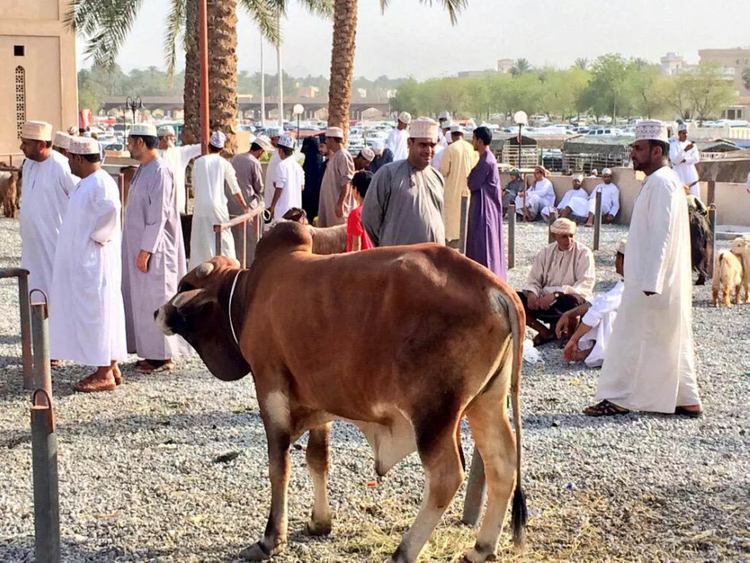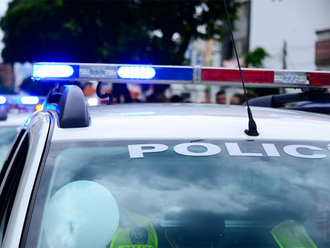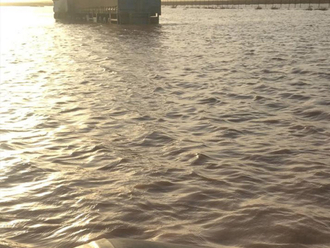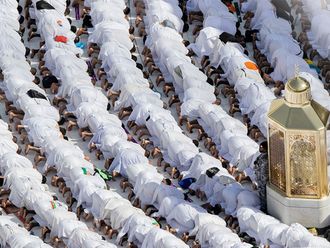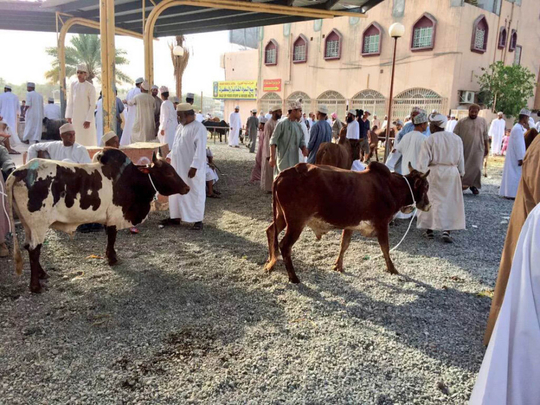
Muscat: Eid livestock markets have witnessed a huge turnout from Omanis, buying and selling livestock nationwide in preparation for Eid Al Fitr.
Eid Habta is a traditional market, held traditionally for centuries that starts six days before both Eid Al Fitr and Eid Al Adha.
Habta can be seen in the provinces of Rustaq, Nakhal, Awabi, Nizwa, Yanqul, Bahla, Ibri, Izki, Adam, Mudhaibi, Ibra, Sinaw, Bidbid, Sur, Jaalan, Bidyah, Khasab, Seeb and Muscat.
Noisy auctions can be seen and heard in every province nationwide, as many look forward to get deals in buying and selling livestock.
The auction takes place in a specified circular area, with a professional auctioneer, who earns at least 3 per cent off each head of livestock. There is more than one auctioneer in each Eid Habta market.
The auction for a cattle head begins from 150 riyals, and could go up to 600 riyals, while the price of a goat could start from 60 riyals and go up to 200 riyals.
Omani livestock like goats, sheep and cows are available in all Eid Habta markets and cost four times as much as imported ones.
Eid Habta organisers said that there is less demand for the imported ones as many nationals prefer Omani livestock as their meat is very tender and easy to cook.
Many Omani livestock owners are expected to make huge profits from the selling of the prized local ones, as there is a huge demand for local livestock.
Juma Al Gafri, an auctioneer, told Gulf News that he heads very day to the auction area in Rustaq province in the early hours of the morning.
“It’s very difficult for me but it’s worthwhile as I make a decent amount of money every day from the auction,” says Juma.
Juma earns around 120 riyals every day at least in Habta market.
Nasser Al Hatmi, a 56 year-old livestock farm owner and Ibri resident, told Gulf News that he made around 2,500 riyals in three days from the selling of local cows alone.
Al Hatmi said that he is expected to earn more as some Omani families contacted him to buy cattle from his farm with the approach of Eid Al Fitr.
Many villagers in the interior have their own farms and livestock, as the meadows and water are abundantly available for livestock.
For instance, each villager in Wadi Hajar village of Ibri province has at least 50 head of goats and five cows, according to residents of the wadi.
The Eid Habta held in Hamra province on Monday witnessed the highest prices being offered for goats and cows. It recorded 300 riyals as the maximum price for a goat. As for a cow, the maximum price recorded so far was 700 riyals in the same market.
Other commodities are also available in Eid Habta markets such as toys for children, cooking items, Omani halwa, traditional light weapons and dried banana leaf used to wrap meat for shuwa (Shuwa is an Omani delicacy eaten only on festive occasions. The dish consists of a whole cow or goat roasted in a special oven, which is a pit dug in the ground).
Oman marked Eid on Saturday, while the rest of the Gulf states marked it on Friday.


